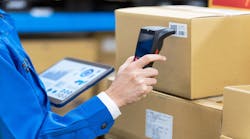Drug safety enforcement laws are becoming more stringent and yet, organizations in the pharma supply chain are still using outdated technology that cannot support new risk and compliance standards. Drugmakers are looking at modern methods like blockchain technology to better manage the supply chain. While that initiative is still in the proof-of-concept stage, one technology that can immediately bring improvement results to the pharma supply chain is Android.
The pharma supply chain is highly complex, responsible for transporting delicate products from A to B, with many stops in the middle. Due to the potentially life-altering nature of the products being transported, there is no room for error.
This level of complexity demands a more powerful and robust solution than legacy Windows technology, which many supply chains still employ. Android has emerged as the clear next generation OS for the supply chain. The majority of major rugged mobile device manufacturers now have Android-based portfolios, and some have even stopped manufacturing devices that run on legacy operating systems. Furthermore, recent product introductions have proven that all vendor-specific technologies are also fully integrated with Android.
Android is also gaining traction in supply chain use because it is low cost, it offers built-in Bluetooth and NFC and it effectively supports voice solutions and touchscreens. A survey of logistics professionals reported that 56 percent of respondents said they planned to increase Android use over the next three years. Android is the dominant OS on multiple devices supply chain workers use daily, and already owns about 85 percent the smartphone market.
Public health safety and compliance are key factors in seeking upgraded technology. For pharma, cross contamination, mix-ups and breakages are simply not an option. Additionally, pharma supply chains need to guard against theft and counterfeit drugs.
U.S. guidelines for drug safety are getting more stringent. In September, the FDA published new guidance aimed at “greater accountability for manufacturers, repackagers and other intermediaries in the supply chain.” The message is: If you manufacture, repackage, distribute, or are responsible for any part of the product flow from source to patient, you are now subject to stricter scrutiny at every point in the supply chain.
Globally, pharma is governed by agencies such as the UK’s National Health Service (NHS) which publishes a guidance for all forms of goods including pharma. Further controls have been set up by the UK Department of Health and Social Care, which has the Scan4Safety initiative. This uses the power of barcodes to ensure that the NHS supply chain complies with global standards and supports clinicians to provide error-free care.
Against the background of increased regulation and enforcement, all participants in an accountable pharma supply chain need to improve their processes. Every movement of a product should be documented, which can be done automatically through scanning a barcode, RFID tag, QR code, or digital watermark. However, despite the critical need for accountability, many warehouses and wider supply chains still rely on mobile scanning and picking devices that run on legacy Windows operating systems. Employees are working on devices with a green screen not dissimilar in look and feel to the old, iconic Nokia mobile phones. So, why are we putting 21st century drugs in the dated hands of 20th century technology?
Not only is this legacy technology dated, it is also rapidly reaching End Of Life (EOL). For the last few decades, rugged mobile devices in the supply chain have relied on the Windows CE OS. However, the start of the countdown to EOL for Windows CE began in June when Windows CE 6.0 passed its End of Extended support date. And this is simply the beginning, with the Windows Embedded Handheld (WEH) 6.1 OS due to go EOL in 2019, followed by the WEH 6.5 OS in 2020 and the Windows Embedded Compact OS in 2021. As these devices will no longer be supported with updates, this presents security and management risks that pharma simply cannot ignore.
While the jury is still out on technologies like blockchain, Android is readily available now to move pharma supply chain into the 21st century and further ensure public health safety.





